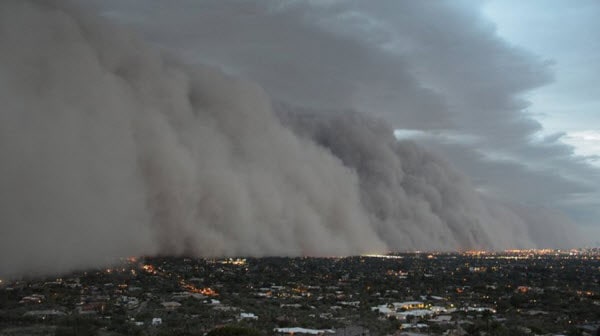
Ensure you're prepared to drive in any weather condition.
Summer is just around the corner and that means monsoon season is also headed our way. Weather-related car accidents make up 24 percent of all vehicle crashes nationally, so it's important to be prepared if a storm hits while you're on the road.
Of all the weather-related car accidents that occur every year, 47 percent happen during rainfall. On top of severe rain and hail, Arizona drivers in specific regions of the state also deal with low visibility during dust storms. To ensure your safety on the road in either of these weather conditions, check out dust storm and monsoon driving tips from the Arizona Department of Public Safety and Arizona Department of Transportation below.
- Avoid driving in dust storms and monsoons all together if possible.
- Do not wait until you are in a low visibility situation to pull off the road. If you see dust headed your way, safely pull off the road or exit the freeway as soon as possible.
- Always be aware of your surroundings. If you get caught in a monsoon or dust storm, immediately check the traffic at the front, sides and back of your vehicle.
- DO NOT stop in a moving lane of traffic or even in the emergency lane. Instead, slow down your vehicle speed substantially. This will allow for safer braking, especially when there is less traction on the road.
- When pulling off the road or freeway, try to stay away from busy areas whether you decide to park or continue driving.
- If you decide to park your car while waiting for the storm to pass, turn off all vehicle lights, including your emergency signals, and wait in the vehicle with your seatbelt on.
- Because braking speeds are affected by slippery roadways, it's a good idea to leave plenty of room between your vehicle and the vehicle directly in front of you.
- In a rainstorm make sure you have your headlights on so that other vehicles around you have a better chance of seeing your car.
- Always wear your seatbelt and make sure your vehicle is in proper condition. No matter the time of year you should ensure that your car's tires are properly inflated, replace worn out tires, fix broken windshield wipers, top off windshield wiper fluid, check brakes, and check the working order of headlights and turn signals.
- Remember that paying attention will significantly increase your chances of avoiding an accident.
Accident statistics sourced from Fourteen-year averages from 1995 to 2008 analyzed by Noblis, based on NHTSA data.